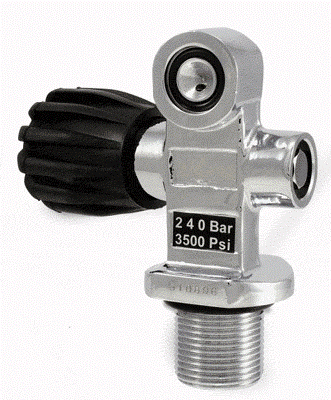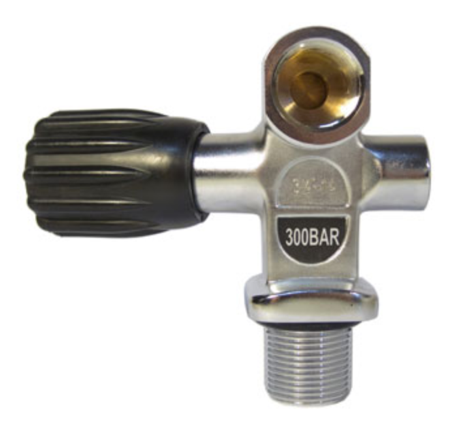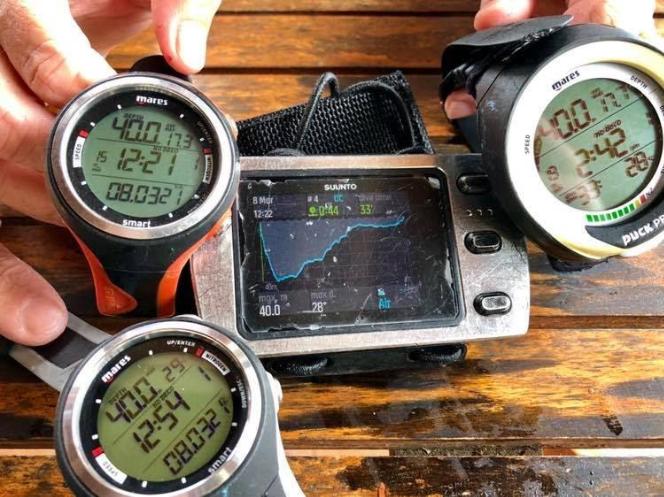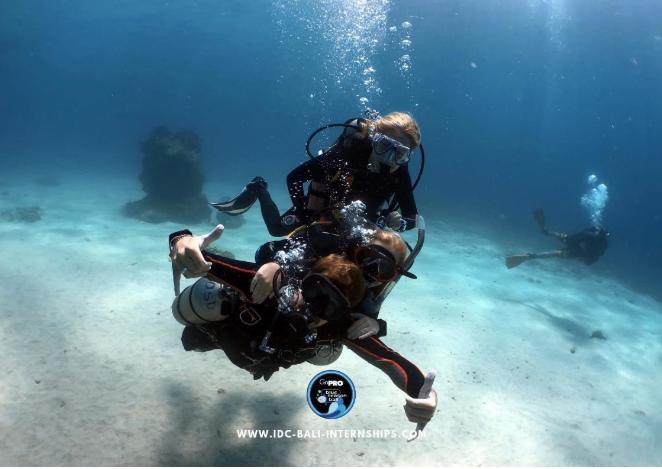What are DIN and Yoke Valves?
When you first start diving – usually in your Open Water Course, you will be introduced to the Yoke/INT-valve and the Yoke-valve Systems.
Those Valves are basically the connection between the SCUBA cylinder and your first stage, which then distributes the air to your regulators, jacket and pressure gage.
The Yoke Valve has been around almost as long as SCUBA diving itself. It quickly became international standard, which is why it’s also referred to as INT-valve.

Yoke valve (aka INT)
The Yoke is a clamp-type mounting which is placed over the tank valve and then secured with a screw to hold it in place. Can you spot the black O-Ring in the first picture? This ring is what we call the main O-Ring and it seals the contact between first stage and SCUBA cylinder. It will make sure no air can get lost while we are submerged and the air ends up where it’s supposed to go – Mainly in our lungs!
Remember the position of the main O-Ring, as this is one of the major differences between DIN and Yoke.

DIN valve
The Name DIN is an acronyme for “Deutsche Industrie Norm” (German Industry Standard) which is an industrial testing and approval agency based in Berlin, Germany. They standardized about 30.000 products in mechanics, engineering and technology.
The DIN Valve for SCUBA diving itself however, was developed in the US in the late 1950 and originally called 5/8 threaded connection. It was later tested in Berlin for industrial use such as commercial diving and thus received the name of the agency.
It was primarily chosen for its higher pressure capacity. While Yoke Valves are generally only approved up to 240 bar a din valve can be set up to handle 300 bar.
The first recreational divers to use the DIN were technical divers, because of the increased safety that the DIN claims. Theoretically, the DIN does have safety advantages. The greater pressure capacity can reduce the risk of a rupture in case of overfilling when the tanks are attached to a compressor. Since the O-ring in a DIN is in the regulator, rather than on the exterior of the valve as in the yoke, it’s less likely to be lost or damaged during transport.
So which one to choose?
The tanks you rent on vacation typically feature yoke valves, so most traveling divers choose a yoke to ensure compatibility. Here in Bali also mostly Yoke valves are used. If you prefer DIN, but still want to rent tanks, it’s usually just a matter of removing a small insert from the yoke valve so that it will accept the DIN regulator.
So, if you’re primarily a tech diver, you’ll probably want to go with DIN. If you’re not a tech diver, it’s a personal choice. The cost is about the same, and you can easily remedy the problems of traveling and renting gear. Considering the DIN’s advantages, however small, even for recreational divers, I dive with a DIN. But again, it’s a purely personal dive choice.
Happy Bubbles!


